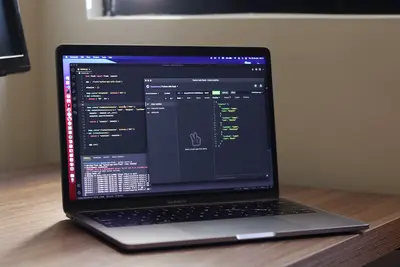🛟 Velero Backup & Disaster Recovery on AlmaLinux 9: Complete Guide
Ready to make your Kubernetes bulletproof? 🚀 Today we’ll deploy Velero on AlmaLinux 9, creating powerful backup and disaster recovery that saves the day! Let’s protect everything! ✨🛡️
🤔 Why is Velero Important?
Imagine restoring your entire cluster in minutes! 💫 That’s Velero’s magic! Here’s why it’s essential:
- 🔄 Complete Backups - Resources and persistent volumes together!
- 📦 Disaster Recovery - Restore entire clusters from scratch
- 🚀 Migration Tool - Move workloads between clusters
- 🎯 Scheduled Backups - Automatic protection on schedule
- 📸 Point-in-Time Recovery - Go back to any snapshot
- 🛡️ Application Consistency - Pre/post backup hooks
- 🌍 Multi-Cloud - Works with S3, Azure, GCP, MinIO
- 💡 Selective Restore - Restore only what you need
🎯 What You Need
Before we backup everything, gather these:
- ✅ AlmaLinux 9 server (4GB RAM minimum)
- ✅ Kubernetes cluster 1.16+ running
- ✅ kubectl configured and working
- ✅ Object storage (MinIO, S3, Azure, or GCP)
- ✅ Storage credentials ready
- ✅ 10GB+ storage space for backups
- ✅ Basic Kubernetes knowledge
- ✅ Ready for disaster recovery! 🎉
📝 Step 1: Prepare AlmaLinux Environment
Let’s prepare your system for Velero! 🛠️
Install Prerequisites
# Update system
sudo dnf update -y # Keep everything current
# Install required tools
sudo dnf install -y wget curl git
# Verify Kubernetes cluster
kubectl get nodes # All should be Ready
kubectl version --short # Check version
# Create velero namespace
kubectl create namespace velero
# Check cluster resources
kubectl top nodes # Ensure sufficient resourcesInstall Velero CLI
# Download latest Velero CLI
VELERO_VERSION="v1.13.0" # Check latest at github.com/vmware-tanzu/velero
wget https://github.com/vmware-tanzu/velero/releases/download/${VELERO_VERSION}/velero-${VELERO_VERSION}-linux-amd64.tar.gz
# Extract and install
tar -xzf velero-${VELERO_VERSION}-linux-amd64.tar.gz
sudo mv velero-${VELERO_VERSION}-linux-amd64/velero /usr/local/bin/
sudo chmod +x /usr/local/bin/velero
# Verify installation
velero version --client-only # Shows CLI version
# Enable bash completion
velero completion bash | sudo tee /etc/bash_completion.d/velero > /dev/null
source /etc/bash_completion.d/velero🔧 Step 2: Set Up Object Storage
Let’s configure storage for backups! 🎊
Option 1: MinIO Setup (Self-Hosted)
# Deploy MinIO in Kubernetes
cat <<EOF | kubectl apply -f -
apiVersion: v1
kind: Namespace
metadata:
name: minio
---
apiVersion: apps/v1
kind: Deployment
metadata:
name: minio
namespace: minio
spec:
replicas: 1
selector:
matchLabels:
app: minio
template:
metadata:
labels:
app: minio
spec:
containers:
- name: minio
image: minio/minio:latest
args:
- server
- /storage
- --console-address
- ":9001"
env:
- name: MINIO_ROOT_USER
value: "minioadmin"
- name: MINIO_ROOT_PASSWORD
value: "minioadmin123" # Change this!
ports:
- containerPort: 9000
name: api
- containerPort: 9001
name: console
volumeMounts:
- name: storage
mountPath: /storage
volumes:
- name: storage
persistentVolumeClaim:
claimName: minio-pvc
---
apiVersion: v1
kind: PersistentVolumeClaim
metadata:
name: minio-pvc
namespace: minio
spec:
accessModes:
- ReadWriteOnce
resources:
requests:
storage: 50Gi
---
apiVersion: v1
kind: Service
metadata:
name: minio
namespace: minio
spec:
type: NodePort
ports:
- port: 9000
targetPort: 9000
nodePort: 30900
name: api
- port: 9001
targetPort: 9001
nodePort: 30901
name: console
selector:
app: minio
EOF
# Wait for MinIO to be ready
kubectl wait --for=condition=ready pod -l app=minio -n minio --timeout=120s
# Create bucket for Velero
kubectl exec -n minio deploy/minio -- mc alias set local http://localhost:9000 minioadmin minioadmin123
kubectl exec -n minio deploy/minio -- mc mb local/velero-backupsOption 2: AWS S3 Setup
# Create AWS credentials file
cat > credentials-velero <<EOF
[default]
aws_access_key_id=YOUR_AWS_ACCESS_KEY
aws_secret_access_key=YOUR_AWS_SECRET_KEY
EOF
# Create S3 bucket (using AWS CLI)
aws s3api create-bucket \
--bucket velero-backups-$(date +%s) \
--region us-west-2 \
--create-bucket-configuration LocationConstraint=us-west-2🌟 Step 3: Install Velero
Time to deploy Velero with all features! 🚀
Install with MinIO
# Create credentials for MinIO
cat > credentials-minio <<EOF
[default]
aws_access_key_id=minioadmin
aws_secret_access_key=minioadmin123
EOF
# Get MinIO endpoint
MINIO_ENDPOINT=$(kubectl get nodes -o jsonpath='{.items[0].status.addresses[0].address}'):30900
# Install Velero with MinIO
velero install \
--provider aws \
--plugins velero/velero-plugin-for-aws:v1.9.0 \
--bucket velero-backups \
--secret-file ./credentials-minio \
--use-node-agent \
--backup-location-config \
region=minio,s3ForcePathStyle="true",s3Url=http://${MINIO_ENDPOINT} \
--snapshot-location-config \
region=minio \
--namespace velero
# Clean up credentials
rm credentials-minioInstall with AWS S3
# Install Velero with S3
velero install \
--provider aws \
--plugins velero/velero-plugin-for-aws:v1.9.0 \
--bucket velero-backups-YOUR_BUCKET \
--secret-file ./credentials-velero \
--backup-location-config region=us-west-2 \
--snapshot-location-config region=us-west-2 \
--use-node-agent \
--namespace velero
# Verify installation
kubectl get pods -n velero # All should be Running
velero backup-location get # Should show Available✅ Step 4: Configure Backup Strategies
Let’s create comprehensive backup plans! 📋
Create Backup Schedule
# Daily backup of all namespaces
velero schedule create daily-backup \
--schedule="0 2 * * *" \
--ttl 720h0m0s \
--include-namespaces "*" \
--exclude-namespaces kube-system,kube-public,kube-node-lease
# Hourly backup of critical namespace
velero schedule create critical-hourly \
--schedule="0 * * * *" \
--ttl 168h0m0s \
--include-namespaces production \
--default-volumes-to-fs-backup
# Weekly full cluster backup
velero schedule create weekly-full \
--schedule="0 0 * * 0" \
--ttl 720h0m0s
# List schedules
velero schedule getConfigure Backup Hooks
# Create backup with pre/post hooks
cat <<EOF | kubectl apply -f -
apiVersion: v1
kind: Pod
metadata:
name: database-pod
namespace: production
annotations:
backup.velero.io/backup-volumes: data-volume
pre.hook.backup.velero.io/container: database
pre.hook.backup.velero.io/command: '["sh", "-c", "pg_dump -U postgres mydb > /backup/dump.sql"]'
post.hook.backup.velero.io/container: database
post.hook.backup.velero.io/command: '["sh", "-c", "echo Backup completed"]'
spec:
containers:
- name: database
image: postgres:15
volumeMounts:
- name: data-volume
mountPath: /var/lib/postgresql/data
volumes:
- name: data-volume
persistentVolumeClaim:
claimName: database-pvc
EOF🎮 Quick Examples
Let’s master backup and restore! 🎬
Example 1: On-Demand Backup
# Backup entire cluster
velero backup create full-backup-$(date +%Y%m%d)
# Backup specific namespace
velero backup create app-backup \
--include-namespaces production \
--default-volumes-to-fs-backup
# Backup with label selector
velero backup create critical-backup \
--selector app=critical \
--default-volumes-to-fs-backup
# Monitor backup progress
velero backup describe full-backup-20240101
velero backup logs full-backup-20240101Example 2: Disaster Recovery
# Simulate disaster - delete namespace
kubectl delete namespace production
# List available backups
velero backup get
# Restore from backup
velero restore create --from-backup app-backup
# Monitor restore
velero restore describe app-backup-20240101
velero restore logs app-backup-20240101
# Verify restoration
kubectl get all -n productionExample 3: Cluster Migration
# On source cluster - create backup
velero backup create migration-backup \
--default-volumes-to-fs-backup \
--ttl 720h0m0s
# Wait for completion
velero backup describe migration-backup --details
# On destination cluster - install Velero with same storage
velero install \
--provider aws \
--plugins velero/velero-plugin-for-aws:v1.9.0 \
--bucket velero-backups \
--secret-file ./credentials-minio \
--backup-location-config \
region=minio,s3ForcePathStyle="true",s3Url=http://minio.example.com:9000 \
--use-node-agent
# Restore on destination
velero restore create --from-backup migration-backup
# Verify migration
kubectl get all --all-namespaces🚨 Fix Common Problems
Don’t panic! We’ve got solutions! 💪
Problem 1: Backup Fails
# Check backup status
velero backup describe failed-backup --details
# Common fixes:
# Check node-agent/restic pods
kubectl get pods -n velero
kubectl logs -n velero -l name=node-agent
# Verify storage access
velero backup-location get
# Check credentials
kubectl get secret -n velero cloud-credentials -o yaml
# Force new backup after fix
velero backup delete failed-backup
velero backup create new-backupProblem 2: Restore Issues
# Check restore status
velero restore describe failed-restore --details
# Partial restore
velero restore create partial-restore \
--from-backup my-backup \
--include-namespaces app-namespace \
--include-resources deployments,services
# Skip problem resources
velero restore create skip-restore \
--from-backup my-backup \
--exclude-resources persistentvolumes,persistentvolumeclaimsProblem 3: Volume Backup Not Working
# Verify node-agent is running
kubectl get daemonset -n velero node-agent
# Add annotation to pod
kubectl annotate pod my-pod backup.velero.io/backup-volumes=my-volume
# Or set default for all volumes
velero backup create volume-backup \
--default-volumes-to-fs-backup
# Check node-agent logs
kubectl logs -n velero -l name=node-agent --tail=100📋 Simple Commands Summary
Your Velero command toolkit! 📚
| Command | What It Does | When to Use |
|---|---|---|
velero install | Install Velero | Initial setup |
velero backup create | Create backup | Manual backup |
velero schedule create | Schedule backups | Automation |
velero restore create | Restore backup | Recovery |
velero backup get | List backups | View available |
velero backup describe | Backup details | Troubleshoot |
velero backup logs | View backup logs | Debug issues |
velero backup delete | Delete backup | Cleanup |
velero schedule get | List schedules | View automation |
velero version | Check version | Verify install |
💡 Tips for Success
Master disaster recovery with these tips! 🏆
Backup Strategy
- 📅 Schedule regular backups (daily minimum)
- 🎯 Use namespaces to organize workloads
- 📝 Label resources for selective backup
- 🔄 Test restore procedures regularly
- 💾 Keep multiple backup versions
Performance Optimization
- ⚡ Use parallel backup/restore
- 🎯 Exclude unnecessary resources
- 📊 Monitor backup sizes
- 🚀 Optimize storage backend
- 💡 Use incremental backups when possible
Best Practices
- 🛡️ Encrypt backups at rest
- 📋 Document restore procedures
- 🔍 Monitor backup success/failure
- ⚠️ Set up alerting for failures
- 🌍 Store backups in multiple locations
- 🔐 Rotate credentials regularly
- 📈 Track backup metrics
🏆 What You Learned
Incredible work! You’re now a disaster recovery expert! 🎉 You can:
- ✅ Install Velero on AlmaLinux 9
- ✅ Configure multiple storage backends
- ✅ Create comprehensive backup strategies
- ✅ Schedule automatic backups
- ✅ Perform disaster recovery
- ✅ Migrate clusters
- ✅ Use backup hooks
- ✅ Troubleshoot common issues
🎯 Why This Matters
You’ve achieved true resilience! 🚀 With Velero:
- Zero Data Loss - Everything is backed up
- Fast Recovery - Restore in minutes, not hours
- Easy Migration - Move workloads between clusters
- Compliance Ready - Meet backup requirements
- Peace of Mind - Sleep better knowing you’re protected
- Cost Savings - Avoid downtime costs
- Cloud Agnostic - Works everywhere
Your Kubernetes clusters are now disaster-proof! No more fear of data loss, no more lengthy recovery procedures. Everything is automated and tested.
Keep exploring features like cross-region replication, backup encryption, and custom resource definitions. You’re running enterprise-grade disaster recovery! 🌟
Remember: Hope is not a strategy - Velero is your insurance! Stay protected! 🎊🛟
P.S. - Join the Velero community, share your backup strategies, and help others achieve resilience! Together we’re making Kubernetes bulletproof! ⭐🙌




